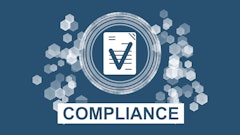
Supply chain disruptions over the last few years have been a wake-up call for many businesses, as the pandemic, natural disasters, geopolitical tensions, and an economic downturn put them through the wringer. Within the complex, interconnected supply chain network, suppliers can be impacted anytime and anywhere, and it’s imperative that businesses not only expect the unexpected but also have a plan in place for when the inevitable happens.
To properly identify and mitigate pervasive supply chain threats before disruption strikes, it’s crucial to look at the big picture, starting with your suppliers. Maintaining supply chain integrity requires risk management through the entire supplier lifecycle, but many companies currently use one-note risk management tools that do not provide a holistic view of their suppliers and who is supplying those suppliers.
The Problem with a Traditional Approach
The traditional questionnaire approach to risk management assessment is inherently flawed and limits responses, making it hard to uncover the full truth. Questionnaires often rely on subjective responses from individuals, and this subjectivity can introduce biases based on personal perspectives or interpretations of risk, leading to inaccurate assessments. Additionally, these questionnaires cannot cover the full spectrum of risks that an organization faces, since they are designed with predefined questions, potentially overlooking emerging or context-specific risks that are not addressed in the questionnaire. Questionnaires are also point-in-time assessments, meaning they only provide a snapshot of the risk landscape at a particular moment, which results in a lack of real-time data.
Companies need a more timely and comprehensive assessment of their suppliers’ risk profiles. In light of recent supply chain disruptions, businesses are now realizing that they need to do a full-spectrum risk assessment of their suppliers rather than siloed assessments focused on each small subset of suppliers at one point in time. In an operational landscape where enterprises utilize multiple systems to collect data related to their suppliers, vendors, or customers, distinct pieces of information are stored in each system. The challenge arises when valuable data captured by one system proves beneficial to another. It is essential to obtain a complete overview of the data throughout the entire enterprise to generate insights that are both practical and actionable. Being able to consolidate all relevant information and house it in one place is imperative to maintaining supply chain integrity.
Achieving Supply Chain Integrity by Limiting Risk
Establishing a robust structure for handling supplier risks is crucial in protecting organizations from the escalating threat of cyberattacks and supply chain disruptions. The guiding principles, represented by the three S’s—speed, scope and scale—effectively steer the process. Speed involves efficiently assessing, managing, and monitoring risk levels without overwhelming internal teams. Achieving scale is essential for ensuring thorough visibility into all suppliers, regardless of their significance. Scope, on the other hand, entails identifying risk levels from the outset and maintaining vigilance throughout the relationship, with ongoing monitoring for potential data breaches and related incidents.
An all-encompassing system for overseeing supplier risks follows a structured methodology involving five essential stages: identifying risks, analyzing risks, mitigating risks, continuously monitoring, and consistently improving. The recognition and ongoing monitoring of risks are paramount to avoiding potentially devastating supply chain attacks. The vetting process needs to be rigorous, involving an assessment of a supplier's security policies, procedures, historical incidents, and potential vulnerabilities across all relevant risk spectrums – Financial, Operational, Cyber, ESG, Geographic, Reputational and Regulatory risks. Subsequently, all acknowledged risks should be classified and ranked, accompanied by the development of contingency plans specifically tailored for high-priority risks.
Leveraging data analytics can also significantly enhance the ability to maintain supply chain integrity. At the core of your interactions with suppliers, vendors, and customers lies master data. It delineates the entities involved in your business, the manner in which transactions are conducted, and the payment arrangements—whether you are paying them, or they are paying you. By collecting and analyzing data throughout the supplier lifecycle, organizations can identify patterns, predict potential risks, and make informed decisions based on data-driven insights. Furthermore, master data acts as a safeguard against fraud, fines and errors. Unfortunately, procurement teams often fail to fully capitalize on the advantages of their master data due to its fragmented presence in their systems, lack of accuracy, or, in some cases, its absence altogether.
Engaging with inaccurate master data sets the stage for fraudulent activities, exposing organizations to hefty fines and reputational damage for failing to thoroughly vet their business partners. The master data management process, particularly during onboarding of trading partners, presents an ideal moment to involve supply chain partners in all strategic initiatives and communication channels. There is no other point in a business relationship when a supplier is more inclined to align with an organization's policies and business requirements.
Maintaining supply chain integrity through the supplier lifecycle is a multifaceted endeavor that demands diligence, collaboration and strategic foresight. By incorporating thorough onboarding, clear communication, continuous monitoring, data-driven decision-making, collaborative relationships and adaptability, organizations can successfully navigate the complexities of the supplier lifecycle. In doing so, they not only safeguard their supply chains but also lay the groundwork for sustained growth and resilience in an ever-evolving business landscape.


























